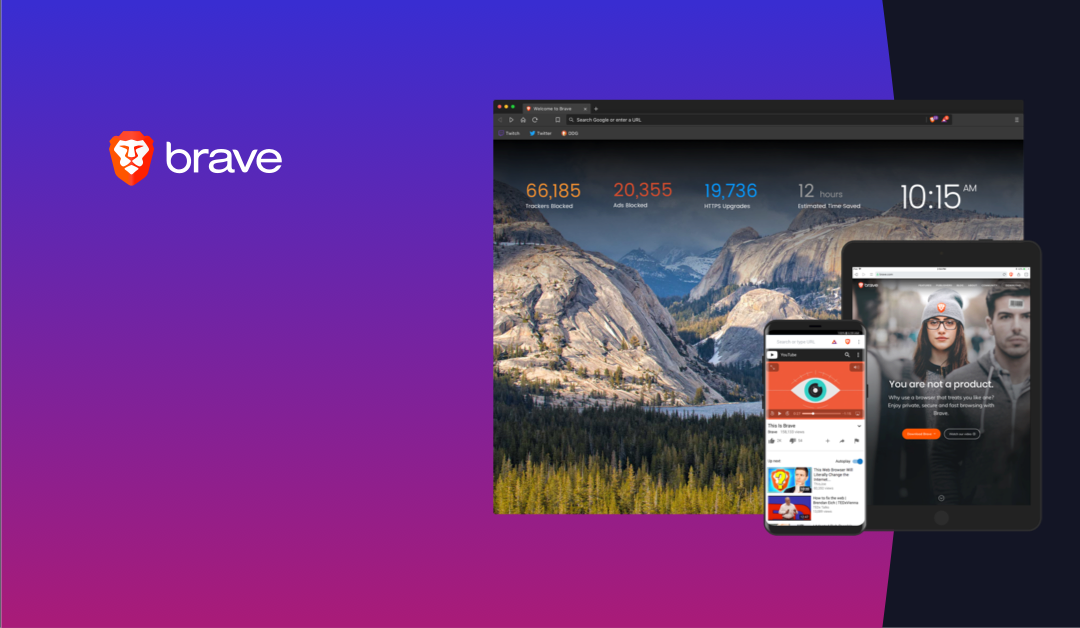Brave wants to pay you to watch ads
The Basic Attention Token (BAT) is a privacy-focused ad platform, so you can support your favourite sites without handing over your data

Brave is a great privacy-focused alternative to Google Chrome, based on the same open-source project. But it doesn’t just replicate Chrome without tracking — it’s forging its own path, blocking third-party ads by default, and launching the Basic Attention Token (BAT).
Businesses buy ad space on Brave with BAT, you’ll see relevant ads without any personal data leaving your device, and you get rewarded for your attention with some BAT, which is stored in your Brave Wallet and can be converted into other digital currencies.
But how does it all work and can it really go up against Google and Facebook ads?
How BAT works
The Basic Attention Token is not your usual cryptocurrency. Instead, it is a utility token based on Ethereum, designed solely for use on the BAT blockchain-based advertising platform. In this case, the token and the platform are both referred to as BAT.
The Basic Attention Token whitepaper notes that Brave imagines BAT eventually becoming part of web standards. The aim is to show you relevant ads based on your browsing history, without sending data to anyone else, so it stays locally on your device.
In return for your attention, you get rewarded in BAT, which you can store in your browser’s built-in wallet as part of the Brave Rewards program. You can then turn it into another currency or use it to tip your favourite websites and creators.
Alternatively, you can let Brave automatically and anonymously reward websites as you browse using the BAT in your Rewards account. However, the site or creator needs to be signed up for the Brave Creator program to benefit from your generosity.
When it first launched, that was all you could do with your BAT, but there’s now a dedicated Brave Rewards Market, where you can turn your BAT into gift cards in fiat (regular, government-backed) currency for your favourite stores.
BAT as a decentralised ad platform
The Brave Browser launched around the same time as the blockchain platform Ethereum. Unlike Bitcoin, which is a form of digital money, Ethereum has a cryptocurrency token, Ether (ETH), and a platform for blockchain-based apps and smart contracts.
Brave developed BAT on the Ethereum platform and launched it with a cryptocurrency ICO. It can process transactions quickly, and can be used as a token for businesses to buy ad space on Brave or deposited to your Rewards account for viewing those adverts.
As of November 2023, there are 10.6 million BAT wallets that have completed 4.12 million transactions. On the publishing side, 164,000 websites have signed up to the Creator program and over 860,000 YouTube creators have joined too.
These are big numbers representing a lot of people, but it’s still a drop in the digital ocean. Google Chrome and Apple’s Safari browser still account for almost 83% of all users, and some estimates suggest over 3 billion people use Chrome, far exceeding Brave’s 63 million.
So while BAT is an interesting idea with pretty good adoption, given how few users Brave currently commands, it’s hard to see how Brave Rewards can topple the Big Tech ad platforms run by Google and Facebook.
However, BAT is an open-source project, so other developers can get involved, and, according to the BAT FAQs, the future could see Brave Rewards built into other apps like Telegram, and WeChat, and as an extension for alternative browsers, which could help get more people onboard.
What is the Brave Browser?
Over the years, Google Chrome has become the internet’s default browser and websites are designed for it. Most popular extensions only work with Chrome (sorry, Firefox), and it comes preinstalled on almost every Android smartphone.
But Chrome is based on Chromium, an open-source version of the browser, as is Microsoft’s Edge browser. Brave is another Chromium-based option, but with all the Google tracking removed, your extensions and websites will still work, making it easier to switch.
Brave also has a built-in ad-blocker, but most websites rely on ad revenue to survive, so the company developed Brave Rewards and BAT to compensate for the lost income. But it all depends on getting enough people to use Brave and opting into Brave Rewards.
Is BAT the future of digital advertising?
A lot of people feel ads ruin the internet. Every site you visit is covered in low-quality ads for supplements, your search results are obscured by several ‘sponsored’ results, and to make all this happen, Facebook and Google gather immense amounts of data about your habits.
Brave Rewards and the BAT platform are an intriguing solution to the problem, allowing advertisers to get their products in front of interested eyes, and you get rewarded with some tokens for your attention, all without sending your data to a Big Tech firm.
It’s a privacy-friendly alternative, but as it's so heavily tied to the Brave Browser, its success depends on Brave’s too. More people are turning away from Chrome, but not in high enough numbers to really dent the market and make BAT the default ad platform.
But that doesn’t mean that it isn’t worth a shot. Brave launched BAT in 2017, and six years later, it’s still putting in new features and development. Over a million publishers and creators have signed up and Brave keeps growing, showing that Google isn’t invincible.

